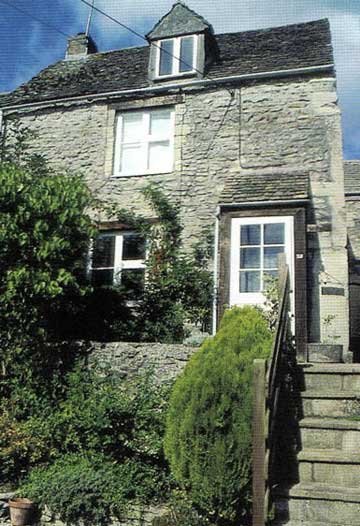As can be imagined it is not easy to unravel the archaeology, nor the descriptions of writers such as Leland who refer to ruins rather imprecisely and more for their picturesque nature than the history.
Maildulph is believed to have lived here as a holy man in the mid 7th century. Did he build a church? William of Malmesbury writing 400 years later says that he did. Where; we don’t know, perhaps on the south west escarpment.
In 676 Aldhelm founded a Benedictine monastery in Malmesbury and built several churches, quite how many is not known. The first was dedicated to Our Saviour, St Peter and St Paul.
The second church dedicated to St Mary is believed to have been close to the site of the present abbey. William of Malmesbury believed it to be of a size and beauty not exceeded by any in England. It was demolished to make way for the abbey and it was likely that material from the old church was incorporated in the ‘new build’.
King Athelstan was buried here under the altar of St Mary in the tower.
A third church built by Aldhelm was St Michael’s; Aldhelm was buried here on his death in 709. This may be the church described by Leland as ‘a little church but it standeth and is a very old piece of work’.
However this description may refer to St Laurence’s church, another product of the energetic Aldhelm, where John Scotus was buried.
Yet another church, again probably the work of Aldhelm was St Andrew’s where many abbots are reported to be buried and there may have been other churches.
All these churches are believed to have been on site of the present abbey and churchyard. On the south side of the churchyard lies St. Paul’s. Although only vestiges of the building plus the 14th century steeple remain the layout suggests a Saxon origin and there is also a Saxon cemetery to the east under the area round the market cross. Was this the site of Aldhelm’s first church? Perhaps it was.
There is an early Saxon church, now a private dwelling in Bristol Street, which was recently identified by John Bowen. It is small but well built to have lasted at least 1200 years.
To the north of the town at Whitchurch Farm, incorporated into the farmhouse are the remains of St James, originally built before the conquest. (Whitchurch is taken to mean White Church; the Cotswold stone would have contrasted with the older wooden ones)
Finally and intriguingly is one of the buildings partially excavated by John Hinchcliffe on the north of the Malmesbury – Foxley Road. This is a Saxon site, a complex of large and substantial structures. The modern road has a kink to avoid the site, suggesting there has been a track for 1200 years or more. One of these structures, the one to the east, has a semi-circular wall on the eastern side. Was this an apse? Is this the remains of an extremely early Christian church?

Old St Mary’s Church, Westport
Described by John Aubrey as “a prettie church, where there were very good windows and a fair steeple, higher than the others”. (St. Pauls).
It was reported to have been more ancient than the Abbey but was pulled down during the Civil War to prevent troops sheltering there against the garrison of Malmesbury. Opposite is a sketch map drawn by John Aubrey with old St. Mary’s shown at the head of the triangle. The replacement church was built in 1680.
And then came the Abbey.



